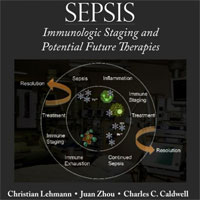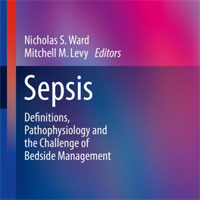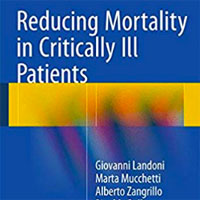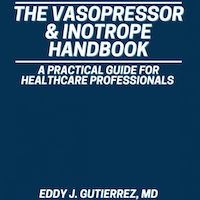Tag: therapy
Humanizing the ICU Experience with Enhanced Communication
Decisions to limit therapy (DTLT) are routine for ICU physicians. Although breaking bad news is one of the most difficult tasks clinicians face, ongoing communication is even more crucial as families (not necessary following... read more
Recognition, Assessment, and Pharmacotherapeutic Treatment of Alcohol Withdrawal Syndrome in the ICU
Alcohol withdrawal syndrome (AWS) is a complex neurologic disorder that develops after an acute reduction in or cessation of chronic alcohol consumption that alters neurotransmitter conduction. The incidence of AWS in the... read more
It’s Insane to Keep Using Mortality As a Primary Endpoint in Critical Care Trials
Mortality is an important endpoint, so we shouldn't ignore mortality trends entirely. However, the vast majority of these will be spurious. Thus, we should generally not change practice due to them. In the history of critical... read more
Potential Therapy for Improving Sudden Cardiac Arrest Resuscitation Outcomes
The severity of cardiogenic shock following asystolic cardiac arrest is dependent on the length of cardiac arrest prior to cardiopulmonary resuscitation and is mediated by myocardial stunning resulting from mitochondrial... read more
Correction and Control of Hyperammonemia in Acute Liver Failure
Continuous renal replacement therapy (CRRT) is associated with reduced ammonia concentrations in acute liver failure patients. This effect is related to greater cumulative dose. These findings suggest that continuous... read more
Beta-Blocker Therapy in Severe TBI
Propranolol decreases in-hospital mortality and improves long-term functional outcome in isolated severe Traumatic Brain Injury (TBI). This randomized trial speaks in favor of routine administration of beta-blocker therapy... read more
Comprehensive Review of Infectious Diseases
Perfect for board review or quick reference in clinical practice, Comprehensive Review of Infectious Diseases is a balanced, high-yield resource covering the full range of infectious disease topics. Whether you're preparing... read more
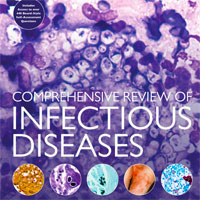
PPIs vs. Histamine-2 Receptor Blockers for ICU Stress Ulcer Prophylaxis
ICU patients assigned to proton-pump inhibitors (PPIs) versus histamine-2 receptor blockers (H2RBs) for ulcer prophylaxis had marginally higher 90-day mortality that just missed statistical significance. Significantly fewer... read more
Intravenous Fluid Therapy in Critically Ill Adults
Despite the administration of intravenous fluids to critically ill patients being a near-universal intervention, the available evidence base guiding their safe and appropriate use is scarce and derived mainly from academically... read more
Pulse oximeter as a sensor of fluid responsiveness: do we have our finger on the best solution?
Additional studies – including volume challenge – are mandatory if we are to determine whether respiratory variation in pulse oximetry really can predict volume responsiveness in mechanically ventilated patients without... read more
Practical Transfusion Medicine
The fifth edition of this practical textbook on transfusion medicine has been thoroughly revised with the latest in scientific and technological developments and edited by a leading team of international expert hematologists,... read more
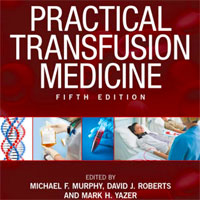
Incidence of Dexmedetomidine Withdrawal in Adult Critically Ill Patients
The majority of patients in our study demonstrated signs that may be indicative of dexmedetomidine withdrawal. Peak and cumulative daily dexmedetomidine dose, rather than duration of therapy, may be associated with a higher... read more
Initial Therapy Affects Duration of Diarrhoea in Critically Ill Patients with Clostridioides Difficile Infection
Clostridioides Difficile Infection (CDI) further harms critically ill patients by increasing 28-day mortality and in case of prolonged diarrhoea the length of their hospital stay. Appropriate therapy should be initiated... read more
The Oxygen Revolution: The Definitive Treatment of Traumatic Brain Injury (TBI) & Other Disorders
Hyperbaric oxygen therapy (HBOT) is based on a simple idea—that oxygen can be used therapeutically for a wide range of conditions where tissues have been damaged by oxygen deprivation. Inspiring and informative, The... read more
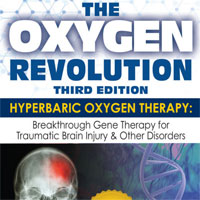
Potential Mechanisms Underlying Centralized Pain and Emerging Therapeutic Interventions
Centralized pain syndromes are associated with changes within the central nervous system that amplify peripheral input and/or generate the perception of pain in the absence of a noxious stimulus. Examples of idiopathic... read more
Corticosteroids as Adjunctive Therapy in the Treatment of Influenza
Corticosteroid treatment in influenza is associated with increased mortality and hospital-acquired infection, but the evidence relates mainly to high corticosteroid doses and is of low quality with potential confounding by... read more
Temporal Trends in the Use of Therapeutic Hypothermia for Out-of-Hospital Cardiac Arrest
The use of therapeutic hypothermia decreased in a large US registry of patients with out-of-hospital cardiac arrest soon after the publication of a study supporting more lenient temperature thresholds. Concurrent with... read more
Lactate and Stepwise Lactate Kinetics Used to Guide Resuscitation
Lactate is an important parameter for monitoring tissue perfusion at present. Lactate kinetics are particularly important to evaluate the response of ICU patients. Therefore, lactate can be the starting point for resuscitation,... read more
Conservative Oxygen Therapy during Mechanical Ventilation in the ICU
In adults undergoing mechanical ventilation in the ICU, the use of conservative oxygen therapy, as compared with usual oxygen therapy, did not significantly affect the number of ventilator-free days. The number of ventilator-free... read more
Probiotics for the Prevention of Antibiotic-associated Diarrhea in Children
Antibiotic-associated diarrhea (AAD) occurs when antibiotics disturb the natural balance of "good" and "bad" bacteria in the intestinal tract causing harmful bacteria to multiply beyond their normal numbers. The symptoms... read more
High-Flow Nasal Cannula vs. Noninvasive Ventilation
High-flow conditioned oxygen therapy delivered through nasal cannulae and noninvasive mechanical ventilation (NIV) may reduce the need for reintubation. Therefore, Hernández et al set out to test if high-flow conditioned... read more
Fluid Resuscitation: Evidence-based Solutions?
Intravenous (IV) fluid prescribing is one of the commonest tasks carried out by junior doctors. I still remember around this time last year when I was fresh out of medical school and had just been let loose on the wards,... read more






